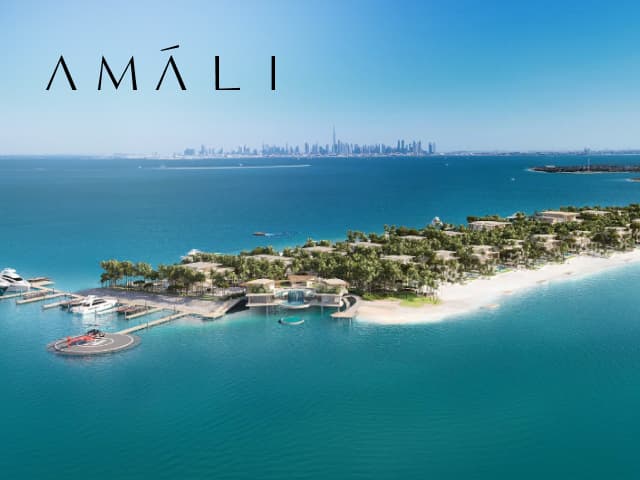High-Converting Landing Pages: Strategic Design Principles That Turn Clicks into Clients
As today’s digital landscape is highly competitive, every click is important, and every landing page visit is a conversion opportunity. If you are running a campaign, launching a new project, or capturing leads, the effectiveness of a high-converting landing page design for conversion can determine whether your investment can turn into revenue.
High-converting landing pages depend not only on visuals but on a strong strategy, psychology, relevance, UX clarity, and conversion-focused design principles, which can guide users from “just browsing” to taking action.
In this blog, we explore what makes a high-converting landing page truly effective and how Element8 leverages smart, conversion-driven strategies to turn clicks into paying clients.
Why Conversion-Focused Design Matters
When we are talking about conversion-focused design, we are referring to the digital experiences built with purpose and not just aesthetics. This is why conversion-focused design and strategic website design for conversion are essential for improving ROI, lowering bounce rates, and creating high-engagement user journeys.
- Better ROI for Marketing Campaigns
Paid ads, SEO, social media, and email marketing all will lead users somewhere. If that “somewhere” fails to convert, your entire campaign weakens. A landing page designed with website design for conversion can multiply ROI by reducing drop-offs and guiding users towards a clearer action. - Reduced Bounce Rates
Modern users usually expect clean design, intuitive layouts, and mobile-ready experiences. If your landing page takes a long time to load or appears cluttered, users will bounce fast. For deeper insight into how modern responsive design can change user experience, check Element8’s guide on mobile-first vs responsive design. - Stronger User Engagement
Conversion-focused design will keep users on the page, interacting with visuals, reading content, and progressing towards your CTA. Every micro-interaction will have a hover effect, animation, and scroll cues, which can keep users emotionally involved.
Not sure why your landing page isn’t converting?Get a free landing page audit. We’ll pinpoint what’s hurting conversions and what to fix first.
What Makes a Landing Page High-Converting?
Even though every business has unique requirements, successful landing pages should share consistent components that are grounded in psychology and UX best practices.. Here are some foundational elements that can define high-converting website designs:
- A Compelling Headline: Your headline must clearly communicate your value within 3-5 seconds. With strong headlines, you can grab the attention and reassure users that they are in the right place.
- A Clear Value Proposition: The main questions are, what makes your solutions better, faster, and more reliable? And with a high-converting landing page can explain this immediately, without jargon or fluff.
- Trust-Building Visuals & Testimonials: People usually trust other people. Customer photos, reviews, video testimonials, and brand logos usually act as social proof that supports conversions.
- A Strong, Visible CTA: Your primary call-to-action should be bold, accessible, and visible above the fold. If it is “Request a Quote,” “Sign Up Free,” or “Book a Demo,” the CTA is the page’s main focus element.
- Minimal Distractions: The main focus of any high-converting landing page is: one message, one offer, one CTA. Removing unnecessary elements can help direct attention where it matters the most.
- Strategic Layout & User Flow: A page that can logically guide users downward will improve engagement and conversion rates.
Conversion-Centered Design Principles
Conversion-centered designs are a strategic methodology deeply rooted in psychology, aiming to influence user decision-making through intentional visuals, messaging, and UX flow. The goal is really simple: guide users towards a single, meaningful action with clarity and confidence. Given below are some essential elements for conversion-centered design principles that every business should apply.
- Clarity: Clarity is the main foundation for all high-converting landing pages. Ambiguity will create confusion, and confusion can kill conversion. Users should instantly understand what you offer, who it is for, what problem is being solved, and what action will be taken. Clear messaging, logical content structure, and straightforward CTAs will always help in reducing hesitation and making the path to conversion effortless.
- Relevance: Your landing page should match the user’s expectations and intent. Misaligned messaging can instantly break trust. For example, if your ad promotes a “Free Demo”, the landing page should prominently feature a “Book Your Free Demo” CTA. A campaign about productivity should never redirect users to a pricing page. The more relevant your content is to the user’s journey, the higher the chances of engagement and conversion.
- Focus (Single Goal): The strongest landing pages will have one clear objective, not multiple competing ones. Trying to collect newsletter signups, push a product purchase, and promote a demo on the same page can only create friction.A single conversion goal can improve clarity, reduce distractions, and significantly boost conversion rates. Focus is the key to more conversions.
- Urgency: Urgency will encourage users to act now rather than later. When applied genuinely and ethically, it can accelerate decision-making without feeling manipulative.Effective ways to build urgency can include limited-time offers, fast-selling stock indicators, and deadline-based CTAs like register before midnight, and short-form, action-driven CTAs like get started in 30 seconds. Authenticity is the key so that false scarcity doesn’t damage brand credibility.
- Credibility: Trust is one of the strongest drivers of conversions. Users will require reassurance before taking action, especially when starting with personal or payment information. Some powerful credibility boosters can include customer testimonials, case studies, media mentions, certifications and awards, industry affiliations, and a money-back guarantee.
Best Practices for Landing Page Optimization
These best practices for landing pages form the backbone of effective landing page optimization and ongoing landing page conversion optimization. Here, let us look at some essential landing page optimization strategies used by top-performing brands.
- Prioritize CTA PlacementCTA buttons should appear:
- Above the fold
- Below the benefits section
- At the end of the page
- Within the navigation on mobile
Consistency prevents decision fatigue.
- Use Persuasive, Benefit-Focused CopyCopy should be concise yet powerful. Users should read in patterns (F-patterns or Z-patterns),
so your strongest points will live where attention naturally flows. - Use Visual Hierarchy & White SpaceSpacing is not just “empty”, it is strategic. Clear spacing can create focus and improvement
for readability. Bold typography, contrasting colors, and directional cues can further enhance
conversion rates. - Mobile-First LayoutsThere is a higher number of users who browse on mobile devices, so your landing pages should offer:
- Thumb-friendly buttons
- Fast load times
- Short paragraphs
- Optimized images
- Simple forms
- A/B Testing & Continuous IterationYou should never assume; always test for authenticity. Heading variations, CTA colors, hero images, testimonials, layout structures, and form lengths should produce dramatic results when tested. These practices strengthen landing page conversion optimization and keep your digital strategy agile.
How to Create a High-Converting Landing Page (Step-by-Step Framework)
Some fundamental questions that businesses often ask are how to create a high-converting landing page that can reliably transform visitors into leads or customers. The answers lie in a structured process. This is the same framework Element8 applies to all the landing pages we develop, making sure there is clarity, persuasion, and meaningful user action.
Step 1: Define the Conversion Goal
Every successful landing page should begin with clarity that defines the purpose. Before designing or writing anything, it is important to understand the primary objectives: whether they are generating leads, encouraging newsletter signups, driving webinar registrations, promoting a product sale, or activating free trials. This single conversion goal can influence the entire structure of the page, from the layout and messaging to the visual hierarchy and call-to-action strategy. When the goal is clear, the user journey will become more direct and intuitive.
Step 2: Understand Your Audience & Their Intent
A high-converting landing page should feel like it is specifically designed for the users who land on it. This will require a deep understanding of user behavior, motivations, and expectations. Businesses can uncover these insights through tools like heatmaps, analytics, user surveys, and session recordings. These can reveal where users hesitate, what they engage with, and what drives their decisions. When your landing page speaks the language of your audience, addressing their needs, concerns, and emotional triggers, the conversion becomes the natural outcome.
Step 3: Craft the Messaging & Visual Direction
The entire experience on the landing page is set by the tone of messaging that it provides. It must be benefit-driven, emotionally appealing, and concise enough to keep the user engaged. Strong messaging is supported by equally compelling visuals, which can elevate the narrative rather than distract from it. If it’s photography, illustrations, or subtle animations, every visual element should contribute to the story you are communicating. When aligned effectively, your work and visuals can make the users feel understood and motivated to act.
Step 4: Design for Usability & Emotion
Conversion happens when logical structure and emotional resonance work together with ease. The layout provides the logic by guiding users through information in a clear, effortless flow. Visuals can provide the emotional impact, helping users connect with the brand and envision the value they will receive. And the call-to-action serves as the final spark that can turn intention into action. High-converting landing pages can sync these components smoothly by creating an experience that can feel both intuitive and compelling.
Step 5: Add Powerful Trust Elements
Even when the users are interested, doubt can prevent them from taking the final step. This is where trust-building elements become the most essential. Social proofs like case studies, client logos, customer reviews, trust badges, and well-crafted FAQs can help reassure visitors that they are making the right decision. These credibility markers reduce uncertainties and strengthen confidence, which can often serve as the final push a user needs to convert.
Step 6: Test, Optimize & Scale
A very successful landing page is never static. The highest-performing pages are continually refined based on real user behavior. This can involve running A/B tests, experimenting with new headlines or visuals, reviewing scroll depth, updating messaging, and enhancing usability. Regular optimization will make sure that the page evolves with the user expectations, market trends, and brand goals. Smart businesses treat optimization as an ongoing cycle rather than a final phase, which allows the landing page to become more effective over time.
Ready to launch a landing page that actually converts? Our UI/UX team crafts the full journey end-to-end — from wireframes to high-impact UI — so every element guides users toward one clear action.
Smart Web Design for Conversion (2026 Trends)
As we move deeper into 2026, landing pages are transforming at a rapid pace. In line with evolving top web design trends, the next generation of smart web design will prioritize personalization, speed, and immersive user experiences.
Here are the key conversion-driven design trends emerging globally:
- Hyper-Personalization:
Smart web design in 2026 is driven by AI-personalization and hyper-personalization, which will allow landing pages to adapt in real time based on user behavior, intent, and device type.
This can create a very highly relevant, frictionless experience that can boost conversion. - Conversational Interfaces:
Chatbots and conversational UI can guide users through the landing page flow, enhancing clarity and engagement. - Interactive & Immersive Elements:
Micro-interactions, animations, and dynamic visuals can create and increase engagement and emotional connection. - Mobile-First Everything:
Mobile designs are no longer a limitation; it is becoming the primary canvas for user experience.To understand how mobile behaviour shapes modern UX standards, explore the evolution and transformation of mobile design in our mobile-first vs responsive design guide. - Minimalism with Bold Typography:
A clean layout that is mixed with expressive typography can create a stunning visual impact without clutter. - AI-Generated Illustrations:
Creatively generated graphics can transform and elevate brand identity and create user experiences that stay in retrospect. - Storytelling & Emotional Design:
Modern landing pages will use narrative structures to build trust and engagement. - Performance as a Feature:
Fast-loading, lightweight websites convert better. Speed is conversion. - Accessibility as a Standard:
Designs must accommodate all users, offering inclusive, frictionless experiences. - Sustainable Web Design:
Eco-conscious, optimized digital footprints are becoming a brand differentiator.
Supercharge Your Digital Growth With Conversion-Driven Landing Pages
A high-converting landing page is to be curated with a proper intention. Every element must serve a purpose that should attract, inform, persuade, and convert. By applying these proven conversion-centred design principles, optimizing layouts, using smart web design trends, and understanding user psychology, businesses can significantly transform their digital performance.
At Element8, we are experts in architecting conversion-optimized landing pages that are engineered to help brands capture more leads, engage the right audience, and convert clicks into loyal customers.
Whether you’re reimagining an existing page or building a high-converting experience from scratch, our team brings strategy, creativity, and performance together—seamlessly.
If your ads are working but your landing page isn’t, you’re leaking growth. Let’s fix the experience with a conversion-first UI/UX redesign.
FAQ
- What is a high-converting landing page?
A high-converting landing page is a dedicated webpage that is designed to encourage visitors to take specific action, like signing up, submitting a form, or making a purchase. It is optimized for clarity, relevance, and persuasive design to maximize conversions. - How to create a high-converting landing page?
You create one by defining your goal, understanding your audience, crafting clear messaging, and adding strong visuals and trust elements. This is designed for usability, and continuously tested and optimized for performance. - What is conversion-centered design?
Conversion-centered design is a strategic discipline that uses psychological triggers, clarity, and focus, trust signals, and visual hierarchy to guide the users toward completing a specific action. - How to optimize a landing page for conversion?
Use A/B testing, refine CTA placement, improve loading speed, simplify layouts, focus on mobile usability, add social proof, and ensure the message aligns with user intent. - Why is my landing page not converting?
Common reasons include unclear messaging, slow load times, inconsistent CTAs, poor mobile responsiveness, lack of trust elements, or mismatched user intent.







